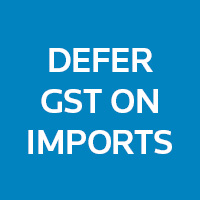Boosting Super: Low And Middle Income Earners
If you’re a low or middle-income earner, you can take advantage of the government super co-contribution scheme to boost your super. The scheme works like this, for eligible individuals, depending on the amount of personal contributions you make to your super account, the government will contribute a maximum of $500 to your super account.
For the 2021-22 income year, you are able to get the maximum $500 government co-contribution if you earn less than $41,112 for the financial year and make a personal contribution of $1,000 to your super account (provided you satisfy the other criteria). The $41,112 threshold includes your assessable income, reportable fringe benefits and total reportable super contributions for the year, less any allowable business deductions.
Remember, personal contributions do not include the compulsory super contributions that your employer makes on your behalf or contributions made through a salary sacrifice arrangements, and are typically made from your after-tax income.
Those individuals that have a total income of more than $41,112 but less than $56,112 for the 2021-22 income year are still able to get a co-contribution, although not at the maximum $500 amount. The entitlement to the co-contribution reduces progressively as income rises with a minimum contribution amount of $20 (if the co-contribution is worked out to be less than $20, the minimum amount of $20 will be paid).
In order to be eligible for the scheme, individuals must also satisfy the 10% test, which requires that 10% or more of your income be from either employment-related activities, carrying on a business, or a combination of both. The ATO notes that for this test, your total income is not reduced by allowable business deductions to ensure that self-employed individuals are not disadvantaged if they have low income/profit in any financial year.
- In addition to the two income tests above, there are also other eligibility criteria including:
- being an Australian resident or permanent visa holder (with the exception of New Zealand citizens on a prescribed visa);
- being under 71 years of age at the end of the financial year;
- have a total super balance less than the general transfer balance cap at the end of 30 June of the previous financial year (($1.6m before 1 July 2021 and $1.7m on or after 1 July 2021);
- have not contributed more than the non-concessional contributions cap ($110,000 for 2021-22 income year); and
- have not claimed a tax deduction for the personal contribution you have made.
Where you meet the eligibility criteria, the government co-contribution is automatically determined by the ATO when you lodge your tax return. In most cases, the amount is paid directly to the super fund to which the personal contributions were made. There are exceptions however, including situations where you’re retired and no longer have a super account, in those instances, the co-contribution will be paid directly to you.
If you think you’re eligible for super co-contribution but have not received a payment, you can contact the ATO either via phone or in writing to request and explanation. Where you’re eligible to the co-contribution and it has not been paid within 60 days of receiving all the required information, the ATO will pay interest as a way of compensation.
Want to take advantage?
If you’re a low or middle income earner and would like to take advantage of the government co-contribution, we can help you work out the optimal amount of personal contribution to boost your super. We can also help if you think you’re eligible and have not received a co-contribution. Contact us today.











